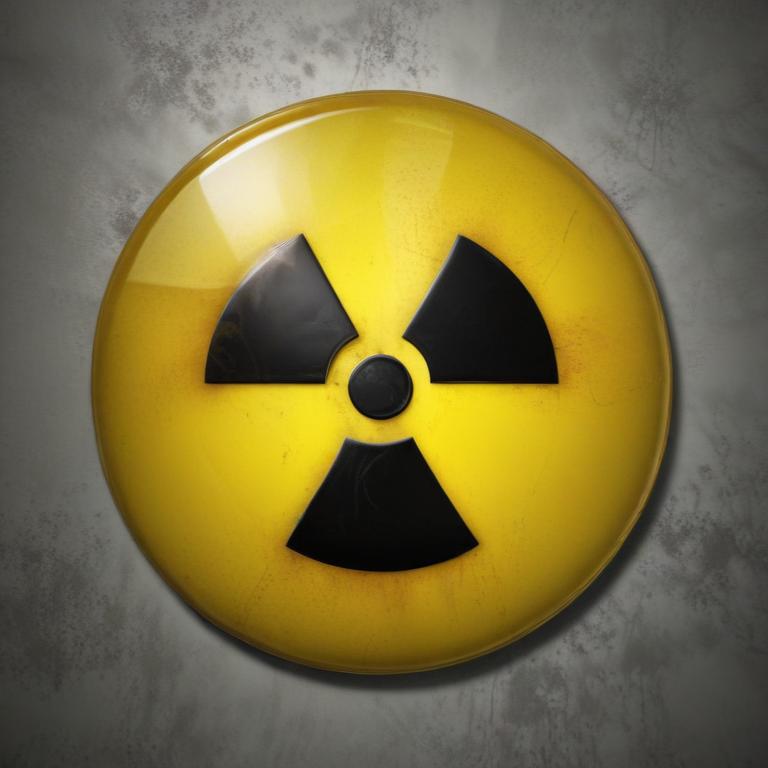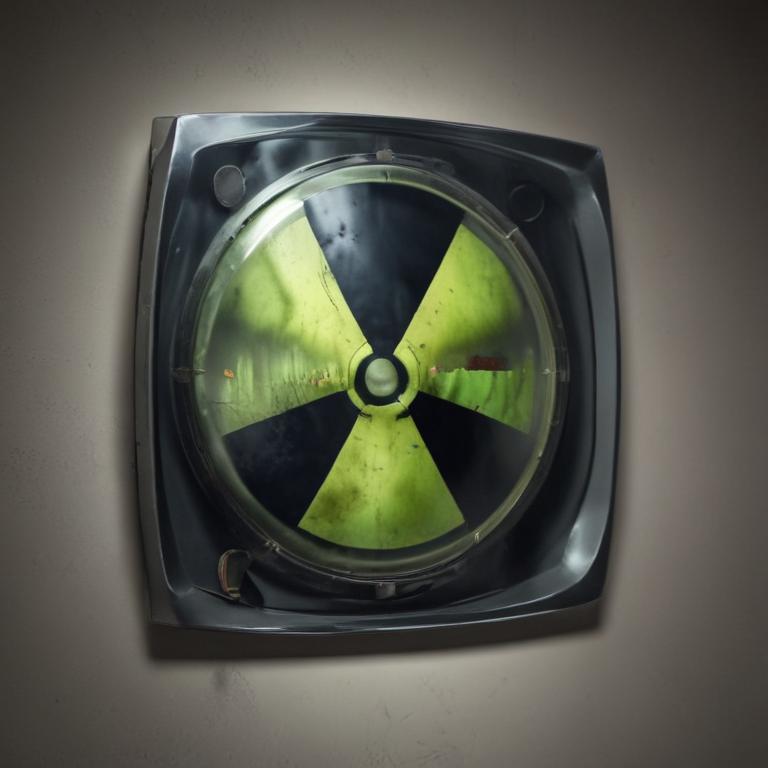发音 (Pronunciation):
IPA: /ˌreɪdiˈeɪʃən/
中文近似: '瑞迪艾申'
中文意思与词性 (Meanings & Part of Speech):
- 辐射 (n.)
- 放射线 ((待补充))
例句 (Examples):
1. The sun emits radiation that warms the Earth.
(太阳发出辐射,使地球变暖。)
2. Radiation therapy is commonly used in cancer treatment.
(放射治疗通常用于癌症治疗。)
用法提示 (Usage Tip):
注意区分 'radiation' 和 'radiate',前者是名词,后者是动词。
更多关于 "radiation" (More about "radiation")
单词来源 (Etymology)
来源于拉丁语 'radiatio',意为“发射、辐射”。
词根词缀解析 (Root & Affix Analysis)
词根 'radi-' 意为“辐射、发射”,后缀 '-ation' 表示动作或状态,所以 'radiation' 是“辐射的状态”。
“radiation”的字母与词根个性化解读
字母象形/引申义 (个性化参考)
- 字母 'r' 的象形或引申含义可能包括: 直立, 向上 (字母R形); 走, 跑 (R象形人); 弯曲 (舌头卷曲); 音变: R=L=M=N。
- 字母 'a' 的象形或引申含义可能包括: 牛角 (象形: 牛头, 力量, 能力); 下面宽上面尖 (形状) -> 延伸, 远处, 高处, 方向, 指示。
- 字母 'd' 的象形或引申含义可能包括: 门 (象形); 向下 (门引申); 牙 (嘴的门); 音变: D=T=S=TH。
- 字母 'i' 的象形或引申含义可能包括: 我 (an, any, one -> 人); 水滴 -> 水 (ice); 尖, 一点, 小 (inch); 元音互换: A=E=I=O=U=W=Y。
- 字母 't' 的象形或引申含义可能包括: 顶端 -> 记号/标志; 手杖 -> 抓 -> 手 -> 伸展 -> 指示代词; 支撑 -> 站立; 三叉 -> Tr转换/转; 分叉; 音变: T=D=S=TH。
- 字母 'o' 的象形或引申含义可能包括: 眼睛/嘴 (圆形) -> 张开, 转动; 圆柱; 音变: A=E=I=O=U=W=Y。
- 字母 'n' 的象形或引申含义可能包括: 水 (M=N); 鼻音 (nose); 突出/生长/新生; 门 -> 否定 (no, not); 连接; 音变: N=M=L=R。
学习提示:以上针对单词 radiation 的字母和词根解读,主要基于提供的特定象形及词根资料。这些提示旨在启发联想,而非绝对定论。更通用的记忆规则和原则请参考首页。英语词源复杂多变,实际应用中请结合更全面的词源词典和语言学知识进行深入学习。
常用词组 (Common Phrases)
- ionizing radiation: 电离辐射
- non-ionizing radiation: 非电离辐射
其他语言 (Other Languages)
- 德语: Strahlung
- 法语: radiation
字母整体创意联想
单词 'radiation' 中的 'r' 像一根射出的光线,'a' 和 'd' 像是光线的起点和终点,'i' 像是一道细长的光线,'t' 像是光线的分叉,'o' 像是扩散开的光圈,'n' 像是光的延伸。
逐字母创意解读
中文谐音助记
“radiation” -> “瑞迪发射”
相关电影/名言
"The radiation levels are off the charts!"
(辐射水平超出范围!)
- 《辐射危机》(2022)
趣味知识/故事
辐射的概念最早是由科学家们在19世纪末和20世纪初发现的,尤其是玛丽·居里在研究放射性元素时提出的,后来辐射被广泛应用于医学、工业等领域。
拓展信息
辐射可以分为电离辐射和非电离辐射。电离辐射具有足够的能量可以电离原子,可能对生物组织造成伤害;而非电离辐射则能量较低,不会电离原子。
在医学上,辐射被广泛用于癌症治疗,但同时也要注意辐射的安全性和防护措施。
网络参考 (More about "radiation" from the Web)
Radiation - Wikipedia
Radiation is often categorized as either ionizing or non-ionizing depending on the energy of the radiated particles. Ionizing radiation carries more than 10 electron volts (eV), which is enough to ionize atoms and molecules and break chemical bonds. This is an important distinction due to the large difference in harmfulness to living organisms.
Radiation | Definition, Types, Effects, & Facts | Britannica
Radiation may be thought of as energy in motion either at speeds equal to the speed of light in free space—approximately 3 × 10 10 centimetres (186,000 miles) per second—or at speeds less than that of light but appreciably greater than thermal velocities (e.g., the velocities of molecules forming a sample of air). The first type constitutes the spectrum of electromagnetic radiation that ...
What is Radiation? | IAEA
Ionizing radiation is a type of radiation of such energy that it can detach electrons from atoms or molecules, which causes changes at the atomic level when interacting with matter including living organisms. Such changes usually involve the production of ions (electrically charged atoms or molecules) - hence the term "ionizing" radiation.
更多图片 (radiation More Images)

